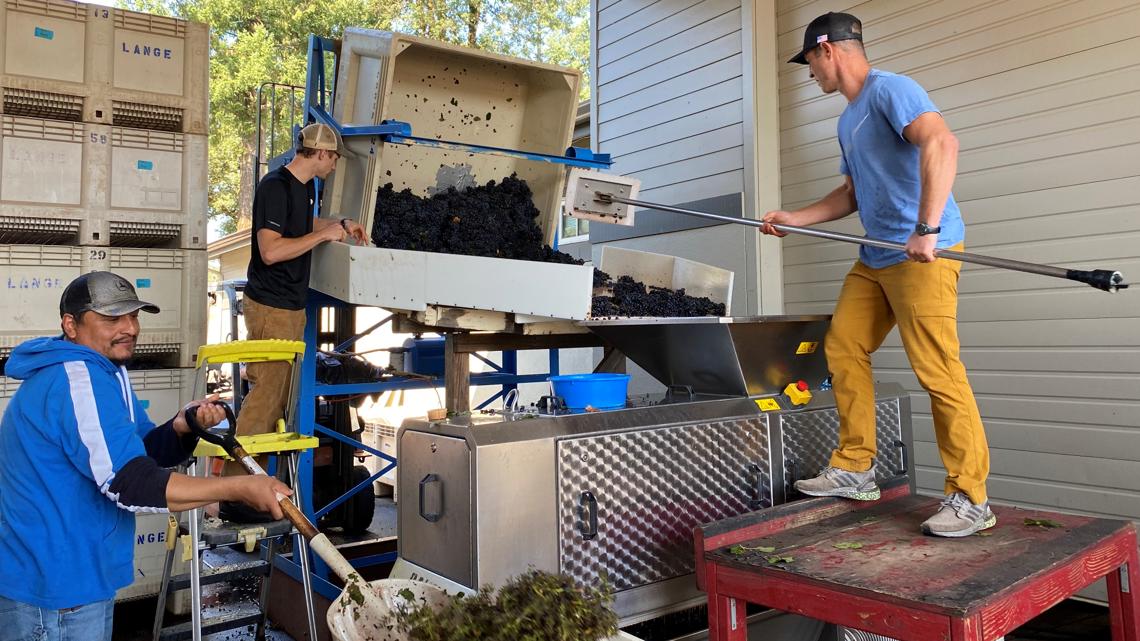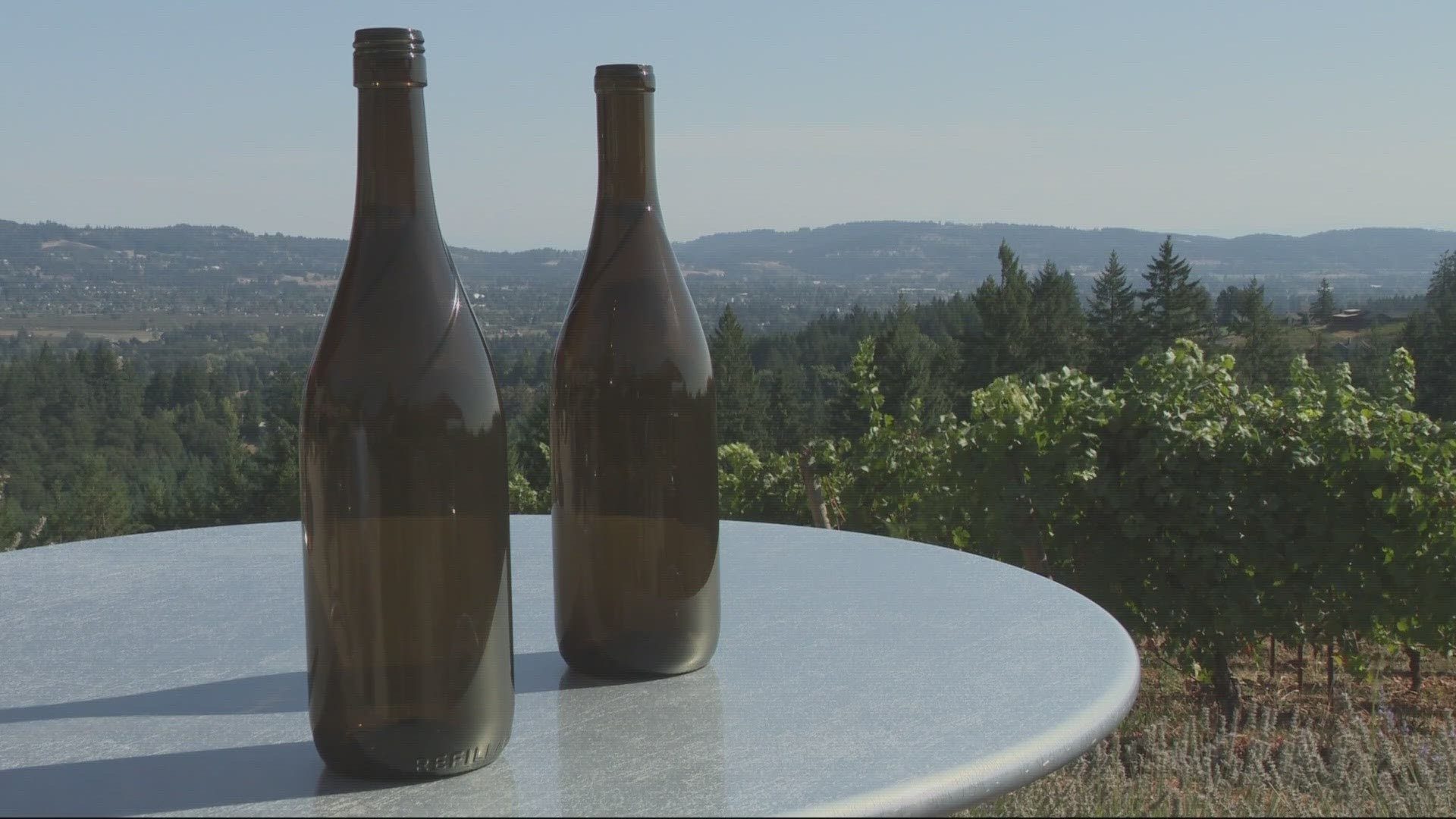DUNDEE, Ore. —
Two entrepreneurs are hoping to bring an environmentally friendly twist to an often overlooked aspect of winemaking: the bottles.
Revino Inc., founded by Adam Rack and Keenan O’Hern, will be rolling out more than 2 million of their unique bottles in the coming months to more than 40 wineries across Oregon and Washington.
And if you don’t catch one during their rollout, not to worry. Their aim is to have these bottles reused by wineries up to 50 times, with huge environmental benefits.
“Glass is just this pure material. It can be recycled indefinitely. It doesn't lose structural value,” Rack said.
O’Hern grew up visiting family in Europe, where reusable glass bottles are commonplace. When he got involved in the wine industry in Oregon, he couldn’t understand why the same kind of system wasn’t in place here.
“It's just a part of nature, what we do on a daily basis in Europe,” he said. “We don't throw away our wine glass from home after we've drank a wonderful glass of wine. We clean it and put it back on the shelf ready for the next use, and this bottle is made out of the same thing.”
To set the reusable bottles apart from their single-use counterparts, Rack and O’Hern sought input from more than 70 wineries and came up with a prototype that features a distinctive ridge designed to reference a grape leaf, the word “refillable” discretely embossed along the bottom lip and the shape of Oregon stamped into the bottom.
Revino is planning to partner with the Oregon Beverage Recycling Cooperative so that consumers can use the state’s existing bottle drops to return the reusable bottles.
From there, the bottles will be taken to Revino’s cleaning facility, expected to be online by late 2024, where the labels will be removed before they go through a thorough sterilization process, complete with third-party quality control checks.
“We'll have a camera system that takes a picture all around the bottle with four different camera,” Rack said. “Also from the bottom to make sure there's no solids left and from the top to make sure there's no scratches in the cork area or chips on the screw.”
Rack said many wineries have been working on making their operations more environmentally friendly for years, from increasing biodiversity in their soils to using lighter bottles that cut down on carbon dioxide emissions. But a lot of those efforts are invisible to the consumer.
“This is a way to shout those sustainability efforts very visually to the public,” he said. “You can't see in a bottle what you did in the vineyard, but you can see what you're choosing to do with your packaging.”
And the environmental benefits over single-use are drastic, Rack said.
“This is about an 85% reduction versus lightweight glass, which is a 15 to 20% reduction in CO2 emissions,” he said. “So when wineries are racing to zero, reuse is the only option, right?”


Jesse Lange, general manager of Lange Estates Winery, said his operation has been working on sustainability projects since they began making wine in the late 1980s. For them, looking at packaging was a logical next step.
“It resonated with me on a lot of fronts, the first one being just our carbon footprint, across the country and across the globe for all the wines we distribute,” Lange said. “I think it's just another component of what we can do to be leaders for the Oregon wine industry for sustainability across the board.”

